Define Our Future
12 April 2024

(Adobe)
The World Economic Forum (WEF) predicts that the space economy will triple to $1.8 trillion by 2035, surpassing the growth rate of global GDP. The report comes after the industry faced difficult times over the past two years, in the face of rising interest rates and geopolitical tensions. Nonetheless, this latest report, in cooperation with McKinsey & Co, proves the resilience and long-term scope for the New Space economy.
Additionally, a report from Space Capital has found that funding for space startups has doubled in the first quarter, compared to figures from the previous year, stimulated by government funding. This growth can be attributed to rising demand for geospatial data and defence requirements, as well as for commercial applications. Demand for downstream space services, such as broadband connectivity and navigation, is currently the main driver of industry growth.
The spectrum of end-users of space services is also expanding, with satellite data being adopted by industries such as retail. Meanwhile, upstream services are increasingly in demand to launch, service, and refuel the growing number of vehicles in orbit.
Scope of downstream services expanding
An additional example of downstream space services was presented by Australia’s Fleet Space this week with the launch of its next-generation Centauri-6 satellite, which will be used for mineral prospecting. Over 40 companies use the service to survey for mineral mining across different continents, utilising the latest in AI and space technology.
Furthermore, using the satellite service provides a carbon-neutral alternative to surveying, “demonstrating a path to accelerate mineral exploration in a more data-driven, scalable, and sustainable way,” according to Flavia Tata Nardini, Co-Founder and CEO of Fleet Space.
Sierra Space has also been carrying out flight testing for their “Ghost” reentry decelerator. The vehicle provides thermal protection and a safe reentry system for companies looking to bring payloads back to Earth. With a promising future for in-space manufacturing of goods such as pharmaceuticals and semiconductors, such a service could become invaluable.
Furthermore, Sierra hopes to have a fleet of Ghosts strategically placed in orbit to provide a responsive service and reenter payloads within 90 minutes to critical locations on Earth. With plans to scale up the service, it also holds promise for reducing costs, thereby advancing the ISM industry. Sierra isn’t alone in this area, with companies such as Varda and Amos Space Cargo also developing their own reentry innovations.
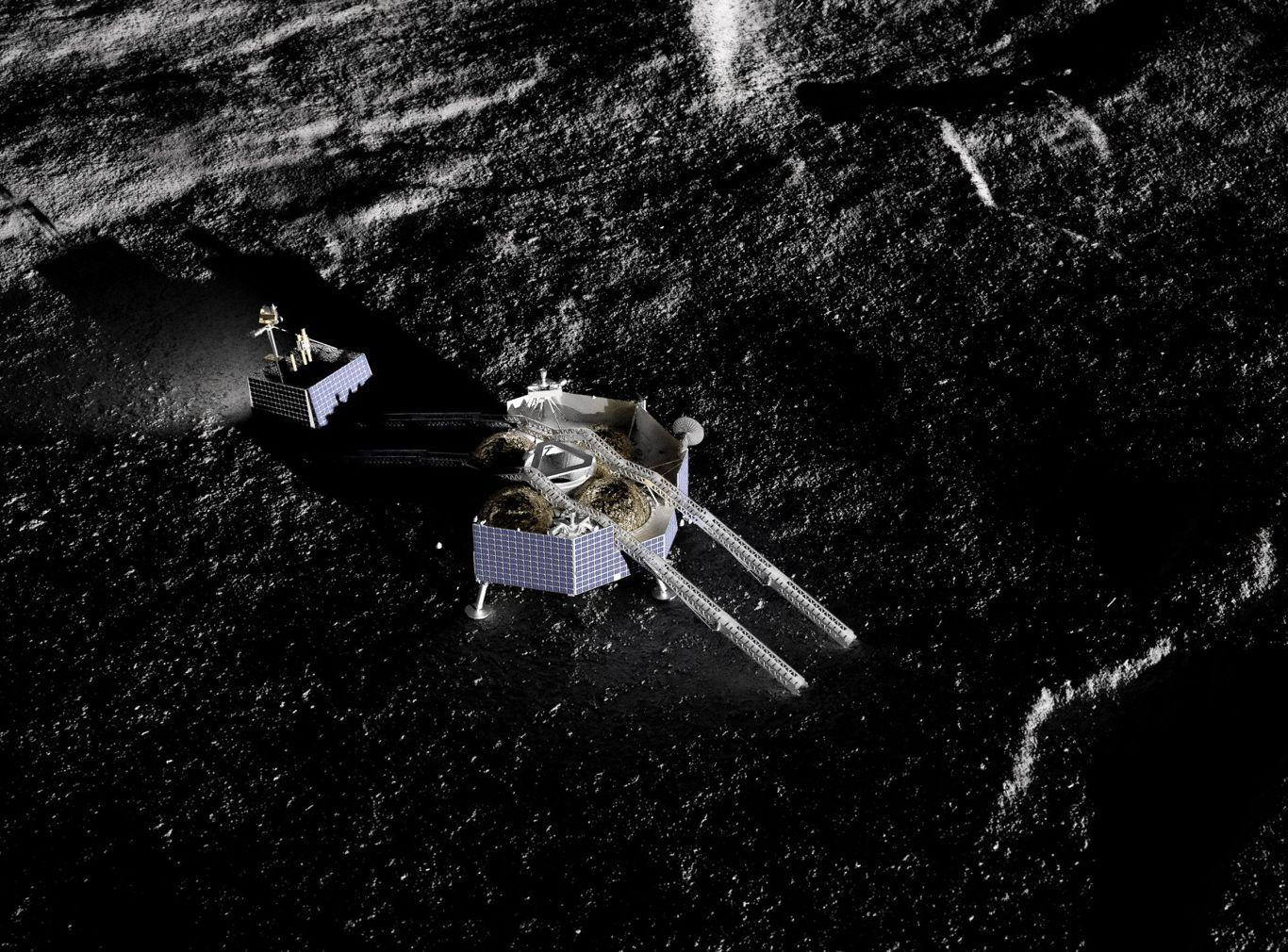
Astrobotic's Griffin lander (Astrobotic)
Lonestar, Astrobotic & iSpace announce additional lunar applications
The growth of the space economy is also attributed to advancements in lunar technology and utilisation. While the new industrial revolution is taking place in orbit, the Moon is seen as the next whitespace in the flourishing New Space economy.
Numerous lunar services are being explored, with growing focus on resource extraction and mining, for both in-situ and Earthbound applications. In February, launching with Intuitive Machines, Lonestar Data Holdings demonstrated the first-of-its-kind “Disaster Recovery as a Service” (DRaaS), using the lunar surface as a secure location for offworld data storage, providing reliable backup and protecting data from both man-made and natural disasters.
The company has now announced its second mission, “Freedom,” set to launch again with Intuitive Machines on their IM-2 mission towards the end of the year. The mission aims to establish the first data centre beyond Earth, providing ultimate data backup services and opening the door for edge computer processing on the Moon and in cislunar space.
Additionally, iSpace US, a Japanese-based lunar exploration company, has provided details surrounding their 2026 landing attempt, set to study the Schrödinger Basin on the dark side of the moon. The company is working with Blue Canyon Technologies to develop two lunar satellites, which will relay data from the lander back to Earth. They will also carry seismometers to study the most recent volcanic activity on the Moon.
Astronomic (US) has also provided details regarding their next mission, collaborating with Mission Control to develop their lunar rover, named “CubeRover.” It will be paired with Mission Space’s software platform, allowing for real-time command capabilities. The mission, using their Griffin lander, is due to launch at the end of the year but may slip into 2025.

ESA contacted IM after successful landing (Intuitive Machines)
European entities expanding presence in lunar economy
Astrobotic is also cooperating with Laser Zentrum Hannover e.V. (LZH) and Technical University Berlin (TU Berlin) on a project aiming to use in-situ 3D printing on the Moon. The project, named “MOONRISE,” will see Astrobotic deliver the mission on their 2026 Griffin mission, with LZH equipping the lander with a laser to melt lunar regolith for printing 2D structures. This also demonstrates an emerging focus from Europe on lunar exploration and an expansion of commercial lunar activity.
Munich-based The Exploration Company also harbours plans for lunar missions, using their Nyx space vehicles. In January, it was reported that they are working with German technology company TRUMPF to develop components for Nyx, aiming to 3D print the engines by spring this year. The vehicle is modular in design, making it adaptable for multiple applications and equipped for in-space refuelling.
They aim for their first orbital mission in 2026, followed by a lunar mission in 2028. Tobias Brune from TRUMPF said, “With our 3D printing technology, we are driving the commercialisation of the space-travel industry,” emphasising the benefits of additive manufacturing in commercial space technology.
Only two weeks ago, Singapore-based private lunar exploration company Qosmosys announced that they had signed a letter of intent with the Luxembourg Space Agency to advance European lunar exploration. According to their website, the partnership enables them to focus on advanced applications pertinent to the lunar economy, which could offer potential benefits for Earth in the near term. Qosmosys raised a significant funding round of $100 million last year and has previously identified Helium-3 as a potential resource to harvest for Earthbound uses.
ESA also recently detailed plans to maintain and expand its foothold in the lunar economy, with Josef Aschbacher, the ESA head, saying that Europe “will not miss the train” on space and will establish a lunar settlement within the next decade. While the agency is also developing its own lander, the ESA Argonaut, they have also been in touch with Intuitive Machines expressing interest in participating in one of their missions, according to Steve Altmus, Intuitive Machines' chief executive.
ESA and European nations find themselves at a turning point. While they lack independent access to space and the Moon, they are on the cusp of witnessing a foray of maiden commercial launches, with ESA changing tactics to support and purchase services from the private sector. It may now be the case that they will also follow the US model and tap into the commercial sector to boost their lunar plans as well.
Define Our Future
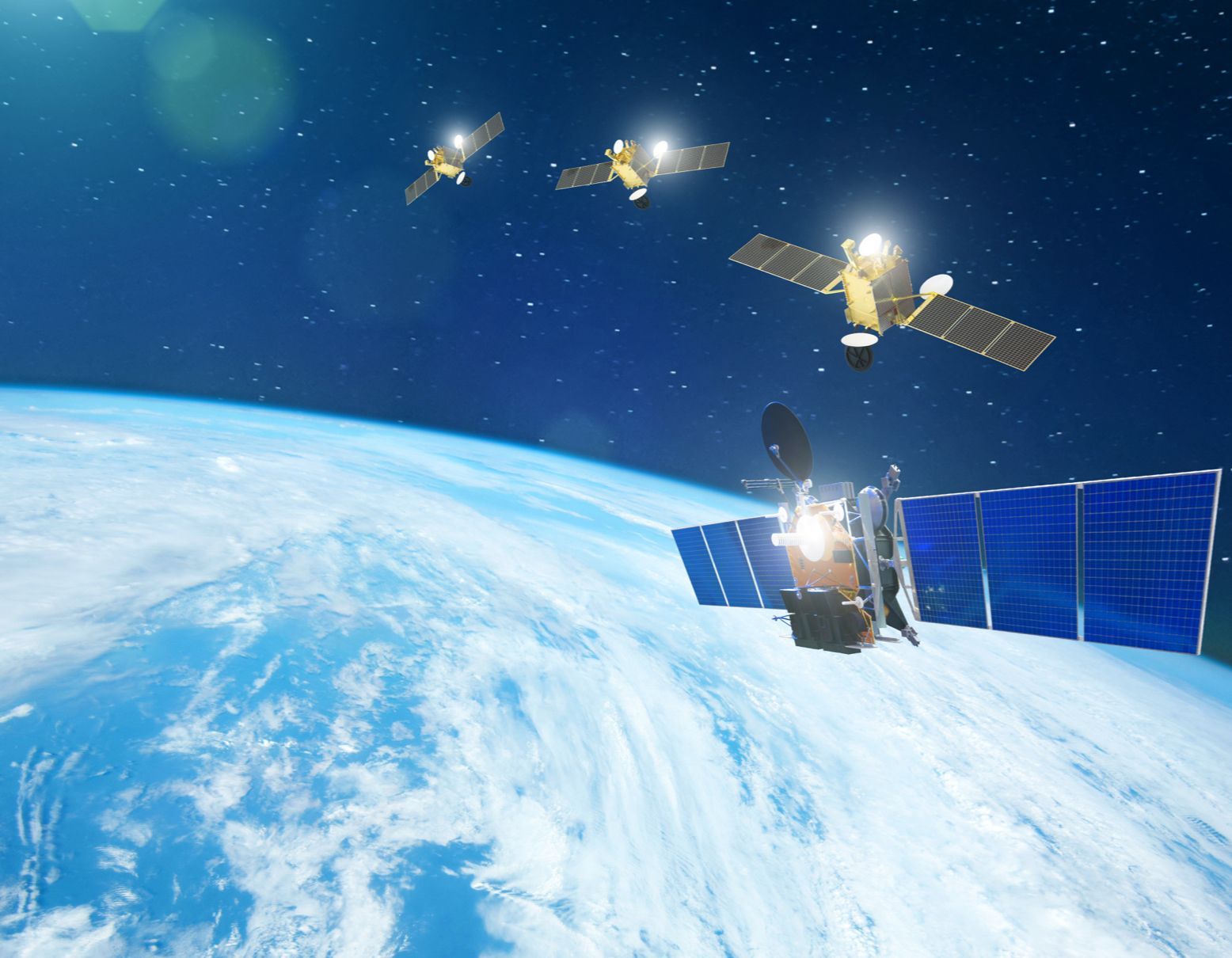
(Adobe)
12 April 2024
Global Industry Outlook: Downstream Space Services, Scaling Lunar Utilisation and Expanding European Moon Ambitions - Space News Roundup

The World Economic Forum (WEF) predicts that the space economy will triple to $1.8 trillion by 2035, surpassing the growth rate of global GDP. The report comes after the industry faced difficult times over the past two years, in the face of rising interest rates and geopolitical tensions. Nonetheless, this latest report, in cooperation with McKinsey & Co, proves the resilience and long-term scope for the New Space economy.
Additionally, a report from Space Capital has found that funding for space startups has doubled in the first quarter, compared to figures from the previous year, stimulated by government funding. This growth can be attributed to rising demand for geospatial data and defence requirements, as well as for commercial applications. Demand for downstream space services, such as broadband connectivity and navigation, is currently the main driver of industry growth.
The spectrum of end-users of space services is also expanding, with satellite data being adopted by industries such as retail. Meanwhile, upstream services are increasingly in demand to launch, service, and refuel the growing number of vehicles in orbit.
Scope of downstream services expanding
An additional example of downstream space services was presented by Australia’s Fleet Space this week with the launch of its next-generation Centauri-6 satellite, which will be used for mineral prospecting. Over 40 companies use the service to survey for mineral mining across different continents, utilising the latest in AI and space technology.
Furthermore, using the satellite service provides a carbon-neutral alternative to surveying, “demonstrating a path to accelerate mineral exploration in a more data-driven, scalable, and sustainable way,” according to Flavia Tata Nardini, Co-Founder and CEO of Fleet Space.
Sierra Space has also been carrying out flight testing for their “Ghost” reentry decelerator. The vehicle provides thermal protection and a safe reentry system for companies looking to bring payloads back to Earth. With a promising future for in-space manufacturing of goods such as pharmaceuticals and semiconductors, such a service could become invaluable.
Furthermore, Sierra hopes to have a fleet of Ghosts strategically placed in orbit to provide a responsive service and reenter payloads within 90 minutes to critical locations on Earth. With plans to scale up the service, it also holds promise for reducing costs, thereby advancing the ISM industry. Sierra isn’t alone in this area, with companies such as Varda and Amos Space Cargo also developing their own reentry innovations.
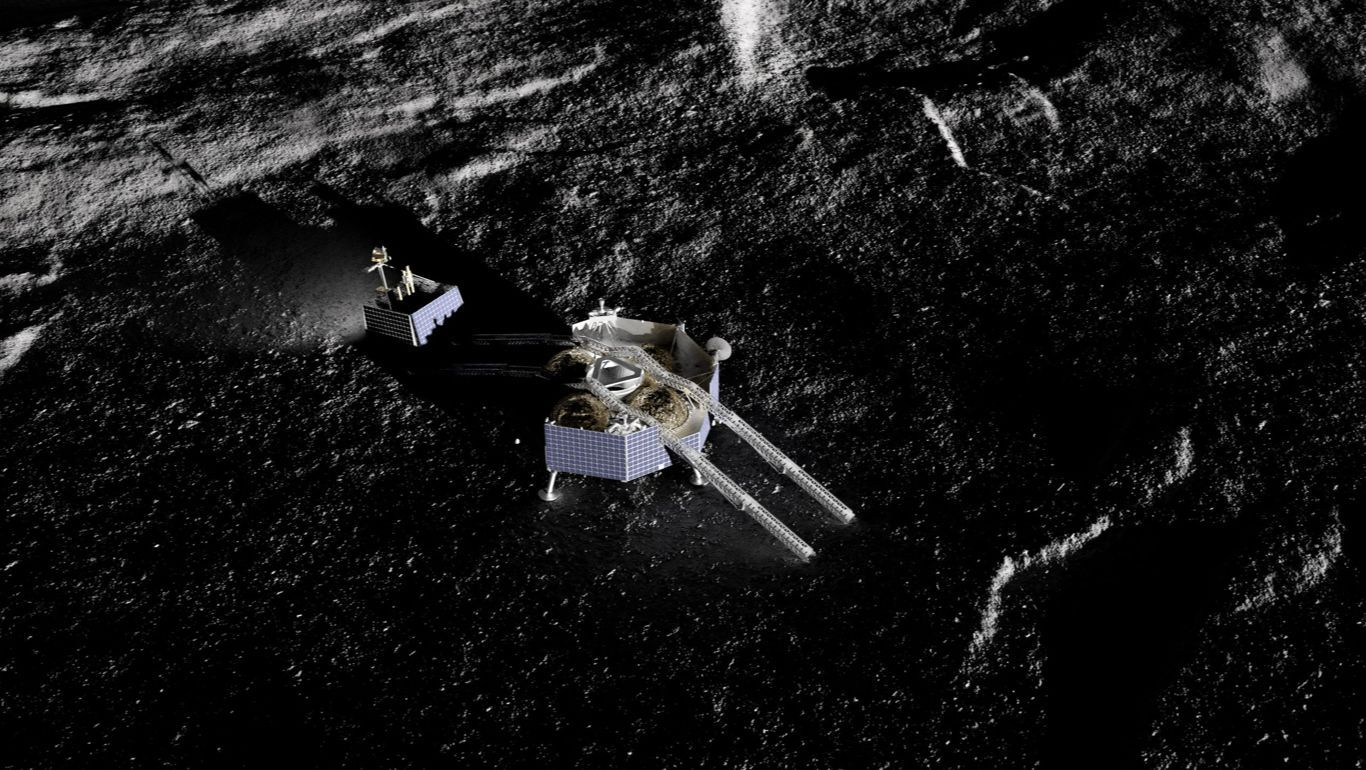
Astrobotic's Griffin lander (Astrobotic)
Lonestar, Astrobotic & iSpace announce additional lunar applications
The growth of the space economy is also attributed to advancements in lunar technology and utilisation. While the new industrial revolution is taking place in orbit, the Moon is seen as the next whitespace in the flourishing New Space economy.
Numerous lunar services are being explored, with growing focus on resource extraction and mining, for both in-situ and Earthbound applications. In February, launching with Intuitive Machines, Lonestar Data Holdings demonstrated the first-of-its-kind “Disaster Recovery as a Service” (DRaaS), using the lunar surface as a secure location for offworld data storage, providing reliable backup and protecting data from both man-made and natural disasters.
The company has now announced its second mission, “Freedom,” set to launch again with Intuitive Machines on their IM-2 mission towards the end of the year. The mission aims to establish the first data centre beyond Earth, providing ultimate data backup services and opening the door for edge computer processing on the Moon and in cislunar space.
Additionally, iSpace US, a Japanese-based lunar exploration company, has provided details surrounding their 2026 landing attempt, set to study the Schrödinger Basin on the dark side of the moon. The company is working with Blue Canyon Technologies to develop two lunar satellites, which will relay data from the lander back to Earth. They will also carry seismometers to study the most recent volcanic activity on the Moon.
Astronomic (US) has also provided details regarding their next mission, collaborating with Mission Control to develop their lunar rover, named “CubeRover.” It will be paired with Mission Space’s software platform, allowing for real-time command capabilities. The mission, using their Griffin lander, is due to launch at the end of the year but may slip into 2025.

ESA contacted IM after successful landing (Intuitive Machines)
European entities expanding presence in lunar economy
Astrobotic is also cooperating with Laser Zentrum Hannover e.V. (LZH) and Technical University Berlin (TU Berlin) on a project aiming to use in-situ 3D printing on the Moon. The project, named “MOONRISE,” will see Astrobotic deliver the mission on their 2026 Griffin mission, with LZH equipping the lander with a laser to melt lunar regolith for printing 2D structures. This also demonstrates an emerging focus from Europe on lunar exploration and an expansion of commercial lunar activity.
Munich-based The Exploration Company also harbours plans for lunar missions, using their Nyx space vehicles. In January, it was reported that they are working with German technology company TRUMPF to develop components for Nyx, aiming to 3D print the engines by spring this year. The vehicle is modular in design, making it adaptable for multiple applications and equipped for in-space refuelling.
They aim for their first orbital mission in 2026, followed by a lunar mission in 2028. Tobias Brune from TRUMPF said, “With our 3D printing technology, we are driving the commercialisation of the space-travel industry,” emphasising the benefits of additive manufacturing in commercial space technology.
Only two weeks ago, Singapore-based private lunar exploration company Qosmosys announced that they had signed a letter of intent with the Luxembourg Space Agency to advance European lunar exploration. According to their website, the partnership enables them to focus on advanced applications pertinent to the lunar economy, which could offer potential benefits for Earth in the near term. Qosmosys raised a significant funding round of $100 million last year and has previously identified Helium-3 as a potential resource to harvest for Earthbound uses.
ESA also recently detailed plans to maintain and expand its foothold in the lunar economy, with Josef Aschbacher, the ESA head, saying that Europe “will not miss the train” on space and will establish a lunar settlement within the next decade. While the agency is also developing its own lander, the ESA Argonaut, they have also been in touch with Intuitive Machines expressing interest in participating in one of their missions, according to Steve Altmus, Intuitive Machines' chief executive.
ESA and European nations find themselves at a turning point. While they lack independent access to space and the Moon, they are on the cusp of witnessing a foray of maiden commercial launches, with ESA changing tactics to support and purchase services from the private sector. It may now be the case that they will also follow the US model and tap into the commercial sector to boost their lunar plans as well.
Share this article
12 April 2024
Global Industry Outlook: Downstream Space Services, Scaling Lunar Utilisation and Expanding European Moon Ambitions - Space News Roundup

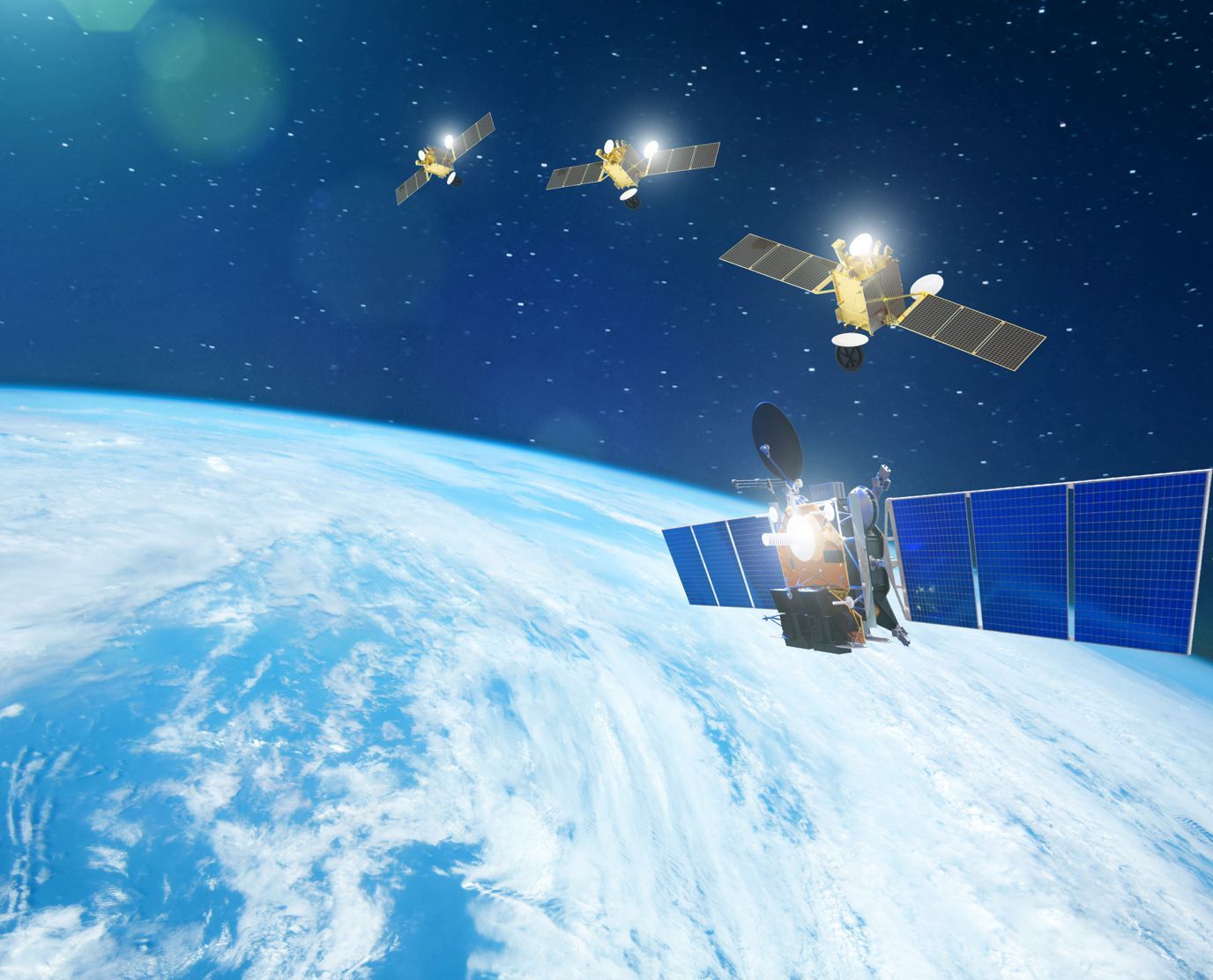
(Adobe)
The World Economic Forum (WEF) predicts that the space economy will triple to $1.8 trillion by 2035, surpassing the growth rate of global GDP. The report comes after the industry faced difficult times over the past two years, in the face of rising interest rates and geopolitical tensions. Nonetheless, this latest report, in cooperation with McKinsey & Co, proves the resilience and long-term scope for the New Space economy.
Additionally, a report from Space Capital has found that funding for space startups has doubled in the first quarter, compared to figures from the previous year, stimulated by government funding. This growth can be attributed to rising demand for geospatial data and defence requirements, as well as for commercial applications. Demand for downstream space services, such as broadband connectivity and navigation, is currently the main driver of industry growth.
The spectrum of end-users of space services is also expanding, with satellite data being adopted by industries such as retail. Meanwhile, upstream services are increasingly in demand to launch, service, and refuel the growing number of vehicles in orbit.
Scope of downstream services expanding
An additional example of downstream space services was presented by Australia’s Fleet Space this week with the launch of its next-generation Centauri-6 satellite, which will be used for mineral prospecting. Over 40 companies use the service to survey for mineral mining across different continents, utilising the latest in AI and space technology.
Furthermore, using the satellite service provides a carbon-neutral alternative to surveying, “demonstrating a path to accelerate mineral exploration in a more data-driven, scalable, and sustainable way,” according to Flavia Tata Nardini, Co-Founder and CEO of Fleet Space.
Sierra Space has also been carrying out flight testing for their “Ghost” reentry decelerator. The vehicle provides thermal protection and a safe reentry system for companies looking to bring payloads back to Earth. With a promising future for in-space manufacturing of goods such as pharmaceuticals and semiconductors, such a service could become invaluable.
Furthermore, Sierra hopes to have a fleet of Ghosts strategically placed in orbit to provide a responsive service and reenter payloads within 90 minutes to critical locations on Earth. With plans to scale up the service, it also holds promise for reducing costs, thereby advancing the ISM industry. Sierra isn’t alone in this area, with companies such as Varda and Amos Space Cargo also developing their own reentry innovations.
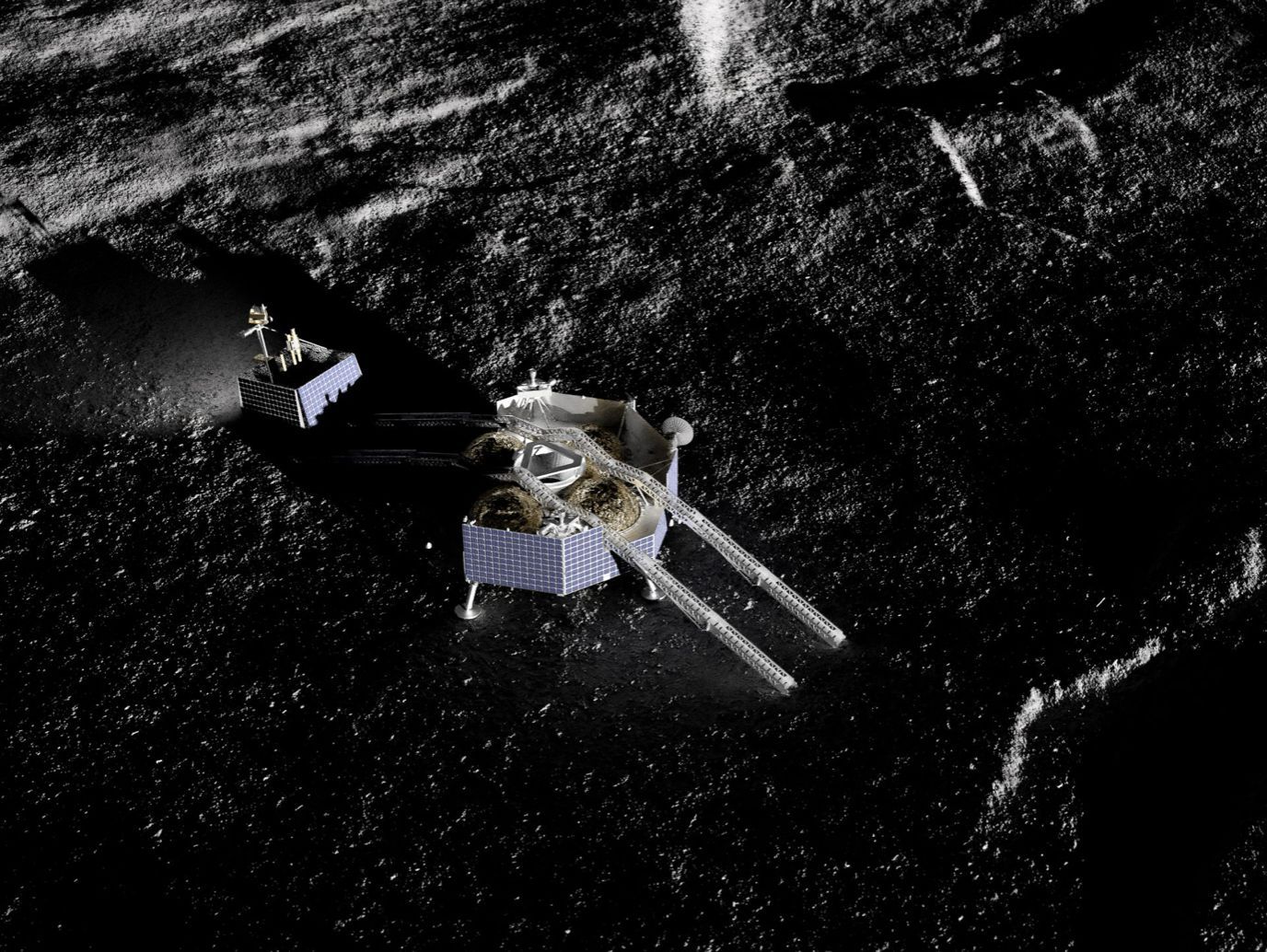
Astrobotic's Griffin lander (Astrobotic)
Lonestar, Astrobotic & iSpace announce additional lunar applications
The growth of the space economy is also attributed to advancements in lunar technology and utilisation. While the new industrial revolution is taking place in orbit, the Moon is seen as the next whitespace in the flourishing New Space economy.
Numerous lunar services are being explored, with growing focus on resource extraction and mining, for both in-situ and Earthbound applications. In February, launching with Intuitive Machines, Lonestar Data Holdings demonstrated the first-of-its-kind “Disaster Recovery as a Service” (DRaaS), using the lunar surface as a secure location for offworld data storage, providing reliable backup and protecting data from both man-made and natural disasters.
The company has now announced its second mission, “Freedom,” set to launch again with Intuitive Machines on their IM-2 mission towards the end of the year. The mission aims to establish the first data centre beyond Earth, providing ultimate data backup services and opening the door for edge computer processing on the Moon and in cislunar space.
Additionally, iSpace US, a Japanese-based lunar exploration company, has provided details surrounding their 2026 landing attempt, set to study the Schrödinger Basin on the dark side of the moon. The company is working with Blue Canyon Technologies to develop two lunar satellites, which will relay data from the lander back to Earth. They will also carry seismometers to study the most recent volcanic activity on the Moon.
Astronomic (US) has also provided details regarding their next mission, collaborating with Mission Control to develop their lunar rover, named “CubeRover.” It will be paired with Mission Space’s software platform, allowing for real-time command capabilities. The mission, using their Griffin lander, is due to launch at the end of the year but may slip into 2025.

ESA contacted IM after successful landing (Intuitive Machines)
European entities expanding presence in lunar economy
Astrobotic is also cooperating with Laser Zentrum Hannover e.V. (LZH) and Technical University Berlin (TU Berlin) on a project aiming to use in-situ 3D printing on the Moon. The project, named “MOONRISE,” will see Astrobotic deliver the mission on their 2026 Griffin mission, with LZH equipping the lander with a laser to melt lunar regolith for printing 2D structures. This also demonstrates an emerging focus from Europe on lunar exploration and an expansion of commercial lunar activity.
Munich-based The Exploration Company also harbours plans for lunar missions, using their Nyx space vehicles. In January, it was reported that they are working with German technology company TRUMPF to develop components for Nyx, aiming to 3D print the engines by spring this year. The vehicle is modular in design, making it adaptable for multiple applications and equipped for in-space refuelling.
They aim for their first orbital mission in 2026, followed by a lunar mission in 2028. Tobias Brune from TRUMPF said, “With our 3D printing technology, we are driving the commercialisation of the space-travel industry,” emphasising the benefits of additive manufacturing in commercial space technology.
Only two weeks ago, Singapore-based private lunar exploration company Qosmosys announced that they had signed a letter of intent with the Luxembourg Space Agency to advance European lunar exploration. According to their website, the partnership enables them to focus on advanced applications pertinent to the lunar economy, which could offer potential benefits for Earth in the near term. Qosmosys raised a significant funding round of $100 million last year and has previously identified Helium-3 as a potential resource to harvest for Earthbound uses.
ESA also recently detailed plans to maintain and expand its foothold in the lunar economy, with Josef Aschbacher, the ESA head, saying that Europe “will not miss the train” on space and will establish a lunar settlement within the next decade. While the agency is also developing its own lander, the ESA Argonaut, they have also been in touch with Intuitive Machines expressing interest in participating in one of their missions, according to Steve Altmus, Intuitive Machines' chief executive.
ESA and European nations find themselves at a turning point. While they lack independent access to space and the Moon, they are on the cusp of witnessing a foray of maiden commercial launches, with ESA changing tactics to support and purchase services from the private sector. It may now be the case that they will also follow the US model and tap into the commercial sector to boost their lunar plans as well.
Share this article

